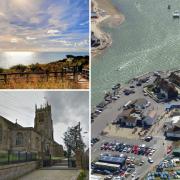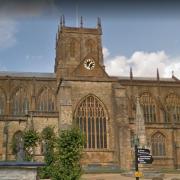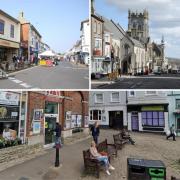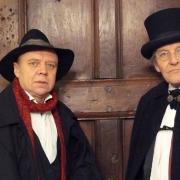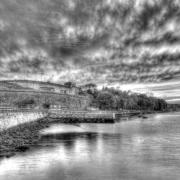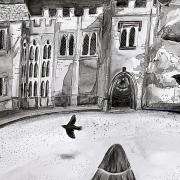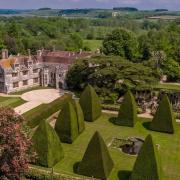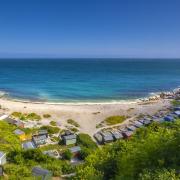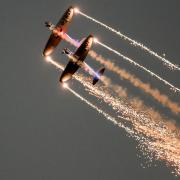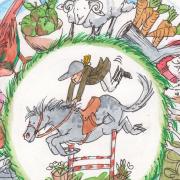With noble fans such as Henry VIII and Elizabeth I, the chivalric racquet sport of Real Tennis has rules more complicated than Quidditch and a court with a penthouse – no wonder novelist Laurence Kennedy fell for the royal game

The history of this beguiling test of strategy and skill fascinated me long before I went on to a court to play. Real Tennis, also known as Royal Tennis, was hugely popular in the 16th century. It features in Shakespeare’s Henry V where Henry promises to turn French tennis balls, sent to him by the Dauphin, into cannon shot and “strike” his royal cousin’s “crown into the hazard” - a wonderfully dramatic image. A couple of centuries later in Alexandre Dumas’ novel The Three Musketeers, set in 17th century France, a prisoner lets his gaoler win on an open air court, knocking shots into the moat so Les Musketeers can clobber the ball-boys and liberate him.
The Victorians loved the game, before their heads were turned by the other tennis, and even today new courts are attracting 21st century players. Best of all, the curious needn’t even leave Dorset. The county has two friendly clubs with fine Victorian courts: Canford Real Tennis and Squash Club, near Poole, run by Steve Ronaldson and The Hyde Real Tennis Club at Bridport run by his nephew, Ben Ronaldson. I enjoyed my first game there one Saturday morning in early summer. The coastal journey home helped me forget another drubbing. But scores never matter in a friendly - the play’s the thing.
As a sport real tennis is individual, perhaps even eccentric. Shots fly off walls or drop awkwardly from the sloping roof of the penthouse. The 16th century cloisters, where the game reputedly has its roots, may explain the court’s sloped penthouse roof with its netted galleries below. And, when a ball flies off the angled buttress wall – called the tambour – and bounces into the winning gallery opposite, it certainly feels Harry Potterish. And none of England’s 26 courts is quite like another.
The cork-centred balls are made by club professionals. Steve Ronaldson, the pro at Canford, also makes them for major competitions including the World Championships. Steve advised on developments in racquet design too - all have the characteristic offset head which look as if they have been dreamed up by an ancestor of Salvador Dali, but really reflect the need for ground strokes.
Julian Sheraton-Davies, the Chairman at Hampton Court’s Royal Tennis Court, tells me that the sweet spot on the racquet is only 25 mm square. Yet a firm volley still flies since racquets are hand-strung at twice the tension of lawn tennis.
Once all major European capitals had real tennis courts - 17th century Paris had more than 200 - and wealthy individuals played for vast sums. Charles I was especially miffed when some aristo lost half the dowry he’d just given him (the equivalent of £600k) in an afternoon. Tempers ran high and the Duke of Buckingham hit young Charles then stormed off court over a contested point, leaving King James to broker another peace.
Real tennis rules can baffle the beginner but seem sensible after a few years of playing. In lawn tennis service alternates politely - but the original and, in my opinion, better game has a different psychology: the same player serves until the ball bounces twice on either side of the net to set a ‘chase’. You have to earn your serve and you’ll find that, just as with cannon fire, it’s better to give than receive.
Players come to the game in different ways. Darren Long, coach at Canford and a former Browning Cup Champion (a tournament for professional players), came from the squash world. Claire Vigrass, the Ladies World Champion, “found the game by complete chance” after Prested Hall opened in her home county of Essex. She’s played nothing else since the age of 11 and now coaches there.
“It is a game of high skill, totally regardless of your gender,” says Claire, whose sister Sarah is also a World Champion player. “It’s much more about tactics than raw power. Strength and speed are great attributes, but not a necessity.”

The internationally agreed handicap system allows players of differing abilities to enjoy playing each other. “The beauty is that every time you step on court, something different happens,” says Claire. “No rally is ever the same. It’s an addictive sport where, no matter how many times you play, you continue to learn and appreciate its beauty.”
I initially came across real tennis via the Hampton Court maze, which I enjoyed running round as a boy. One hot day, when the maze was shut, I crunched over the gravel and pushed a heavy door marked ‘Tennis Court’. The Royal Tennis Court at Hampton Court was originally built in the 1520s for Henry VIII who was a keen player; it was later rebuilt in 17th century by Charles II. This was nothing like the wire-netted asphalt world of my local rec!
Later, living in Cambridge, with two courts just a few 100 yards away, I still denied myself the chance to give it a go. Then I wrote a novel in which the Suffolk nobleman, who gave his name to Jermyn Street, humiliates the narrator on the long gone Whitehall court.
Coming across this strangely familiar game once more inspired countless emotions in me. Finally, just before last Christmas, I played at Hampton Court.
Don’t be as slow as me to enjoy the controlled absurdity of the original beautiful game - but beware. Heading that hard ball off the penthouse roof, even to amuse others, is probably best avoided!
Canford Real Tennis and Squash Club - head pro: Steve Ronaldson
The Club is located on the Canford School campus and has 155 members. The court dates from 1879 although there had been an earlier court built in the grounds of the manor house dating back to 1541. The Club will be hosting the Browning Cup from 15-17 March 2015. For more details visit canfordtennisclub.co.uk
Canford Real Tennis and Squash Club, Canford Magna, BH21 3AD 01202 881232
The Hyde Real Tennis Club - head pro: Ben Ronaldson
Originally built in 1885, the Real Tennis court at The Hyde, which is located in Walditch on the outskirts of Bridport, has recently been renovated to its former glory. For more details on lessons please contact the club on 01308 420777 or email clubpro@hyderealtennis.co.uk
The Hyde Real Tennis Club, Walditch Road, Walditch near Bridport DT6 4LB
***
READ ON
• Things to do in Dorset this weekend




